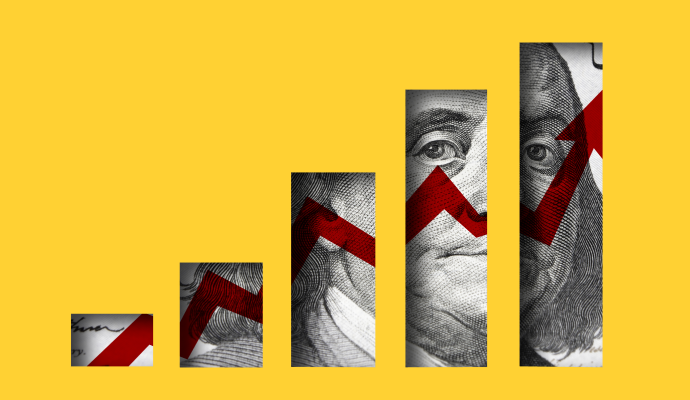Healthcare Spending to Pick Up Pace, Reaching $7.2T by 2031
National healthcare spending growth is stabilizing after COVID-19, but the feds expect the rate to accelerate to 5.4% per year through 2031.

Source: Getty Images
- National healthcare spending slowed during the COVID-19 public health emergency (PHE) as the entire industry experienced severe disruptions to standard care. Now that the PHE has ended, healthcare spending growth is expected to pick back up to reach $7.2 trillion by 2031, according to new estimates from the Office of the Actuary (OACT).
Published ahead of the July 2023 issue of Health Affairs, the OACT study estimates healthcare spending to grow by 5.4 percent per year on average from 2022 through 2031. National healthcare spending grew by 4.3 percent in 2022, the latest data shows, following a 2.7 percent growth rate the previous year.
In 2022, OACT researchers expect healthcare spending to reach $4.4 trillion.
“Recent legislation is anticipated to affect trends in health insurance enrollment and health care spending over the next decade,” Sean Keehan, an economist in the OACT at CMS and the Health Affairs study’s first author, said in a press release emailed to RevCycleIntelligence. “Altogether, and consistent with its past trend, health spending for the next ten years is expected to grow more rapidly, on average, than the overall economy.”
OACT researchers expect economic growth to outpace increases in national healthcare spending in 2022, resulting in a lower share of gross domestic product (GDP). Healthcare spending’s share of GDP is estimated to decrease from 18.3 percent in 2021 to 17.4 percent in 2022.
READ MORE: Healthcare Costs for Average Family Exceed $31K
However, with healthcare spending projected to increase over the coming years rapidly, OACT researchers project healthcare spending’s spending share of GDP to rise to 19.6 percent by 2031 as nominal GDP grows nearly on pace with average growth in national health expenditures.
Hospital spending to accelerate
Across all major sectors in the annual report, hospital spending is expected to grow the fastest, at 5.8 percent, on average, through 2031. Meanwhile, physician and clinical services spending will increase at 5.3 percent and prescription drug spending at 4.6 percent.
OACT researchers project hospital spending to accelerate, but growth will significantly vary through 2031. For example, hospital spending growth will slow to 4.8 percent in 2022 as hospitals experience staffing challenges and projected declines in private health insurance and out-of-pocket spending. Spending is estimated to increase faster in 2023 as these spending trends reverse and hospital prices increase because of inflation and higher labor costs.
Average price growth for hospitals is projected to increase faster at 3.2 percent during the whole period versus 2.2 percent for prescription drugs and 2.0 percent for physician and clinical services, according to the OACT report.
Hospital spending growth is projected to slow once again in 2024 because of Medicaid disenrollments. After that, growth will likely stabilize starting in 2025 when the industry can transition from PHE-related issues affecting utilization and spending. The youngest of the Baby Boomer generation will also age into Medicare. However, the payment rate cap on the Medicaid disproportionate share hospital program will partially offset growing expenditures.
READ MORE: Racial and Ethnic Health Inequities Led to $421B in Excess Spending
Average price growth for hospitals is projected to increase faster at 3.2 percent during the whole period versus 2.2 percent for prescription drugs and 2.0 percent for physician and clinical services, according to the OACT report.
Growth in physician and clinical services spending will stabilize slightly sooner in 2024, OACT researchers estimate. Spending from private health insurance beneficiaries and price growth are projected to boost spending growth, while the reinstatement of sequestration-related cuts in Medicare, declines in COVID-19 relief funding, and Medicaid disenrollments will offset spending.
Similar to hospital spending, Medicare spending will contribute to greater physician and clinical services expenditures because of enrollment growth. By 2026, Medicare enrollment to outpace private health insurance signups.
Medicare spending on the rise
Among the major payers, Medicare will likely see expenditures rapidly rise. OACT projected a growth rate of 7.5 percent per year through 2031 versus 5.4 percent for private-payer spending and 5.0 percent for Medicaid spending.
Despite projected growth, the Medicare spending growth rate represents a deceleration in spending growth compared to the rate the previous year. Emergent care utilization slowed among Medicare fee-for-service beneficiaries, leading to slower spending growth along with the reintroduction of sequestration-based cuts.
READ MORE: Negotiated Prices for Surgical Procedures Higher in Hospital Networks
Utilization and intensity of hospital services are projected to increase, resulting in faster Medicare fee-for-service per enrollee spending this year. Baby Boomers aging into Medicare will have a major impact on spending, OACT researchers add.
Medicare expenditures are expected to reach over $1.0 trillion in 2023, with a significant increase in growth from 4.8 percent in 2022 to 8.0 percent in 2023.
OACT researchers also project in the study that the insured share of the population to remain higher than 90 percent over the next couple of years. Despite projected Medicaid enrollment losses of up to 81.1 million by 2025, OACT expects further projected increases in enrollment in private health insurance from enhanced Marketplace subsidies.
